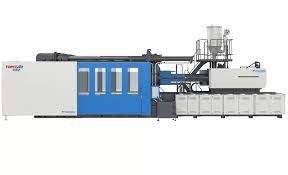LED bulbs have revolutionized lighting technology with their energy efficiency and longevity. Among the many processes involved in manufacturing LED bulbs, injection molding plays a crucial role. This article explores what LED bulb injection entails, its significance in the industry, and the impact it has on the final product. led buld injection
What is LED Bulb Injection?
LED bulb injection refers to the manufacturing process where thermoplastic materials are injected into molds to produce components of LED bulbs. These components can include housings, lenses, bases, and other intricate parts that make up the bulb.
The Injection Molding Process
**1. ** Design and Mold Creation
The process starts with the design of molds that define the shape and features of the LED bulb components. These molds are typically made from metals such as aluminum or steel due to their durability and ability to withstand high pressures and temperatures during injection.
**2. ** Material Selection
Thermoplastics are the most commonly used materials in LED bulb injection molding. These materials are chosen for their properties such as heat resistance, durability, and ease of molding. Common materials include polycarbonate (PC), acrylic (PMMA), and polypropylene (PP).
**3. ** Injection Molding
Once the molds are ready and the materials selected, the injection molding process begins. It involves several key steps:
- Heating: The thermoplastic material is heated to a molten state within the injection molding machine.
- Injection: The molten material is injected into the mold cavity under high pressure. This pressure ensures that the material fills the mold completely and evenly.
- Cooling: After injection, the mold is cooled to solidify the material. Cooling rates and times are carefully controlled to prevent defects and ensure dimensional accuracy.
- Ejection: Once cooled, the mold opens, and the newly formed LED bulb component is ejected.
Advantages of LED Bulb Injection
**1. ** Precision and Complexity
Injection molding allows for the production of highly precise and complex shapes with consistent quality. This is crucial for LED bulbs, where precise optics and fitment are essential for performance.
**2. ** Cost Efficiency
Despite initial setup costs for molds, injection molding offers significant cost savings in mass production due to high production rates and minimal material wastage.
**3. ** Material Flexibility
LED bulb injection molding supports a wide range of thermoplastic materials, allowing manufacturers to choose materials that meet specific requirements for heat resistance, transparency, or mechanical strength.
Applications of LED Bulb Injection
LED bulb injection molding is utilized across various applications:
**1. ** Consumer Lighting
In consumer lighting, injection-molded components form the housing, lens, and base of LED bulbs. These components ensure durability and efficient light distribution.
**2. ** Automotive Lighting
LED technology has transformed automotive lighting due to its efficiency and design flexibility. Injection molding produces intricate headlamp and taillamp components that meet stringent automotive standards.
**3. ** Commercial and Industrial Lighting
From office spaces to industrial environments, LED bulbs manufactured through injection molding provide energy-efficient lighting solutions with long operational lifespans.
Challenges and Innovations
**1. ** Design Complexity
As LED bulb designs become more intricate to optimize light output and efficiency, molds must accommodate these complexities without compromising manufacturing efficiency.
**2. ** Material Innovation
Continued research focuses on developing new materials that enhance LED bulb performance, such as improved heat dissipation or enhanced light diffusion properties.
**3. ** Environmental Considerations
Efforts are underway to improve the sustainability of injection molding processes by reducing energy consumption, minimizing waste, and exploring biodegradable materials.
Future Trends in LED Bulb Injection
The future of LED bulb injection molding is promising:
**1. ** Smart Lighting Integration
Integration of smart technologies within LED bulbs will drive demand for customized components that can be efficiently produced through injection molding.
**2. ** Advanced Manufacturing Techniques
Additive manufacturing techniques such as 3D printing may complement traditional injection molding, enabling rapid prototyping and customization of LED bulb components.
**3. ** Energy Efficiency Standards
Continued advancements in LED technology and injection molding processes will support global efforts to improve energy efficiency and reduce environmental impact.
Conclusion
LED bulb injection molding represents a critical aspect of modern lighting technology. Its ability to produce high-quality, precise components efficiently has contributed significantly to the widespread adoption of LED lighting across various industries. As technology advances and environmental considerations become more pressing, the future of LED bulb injection molding looks set to innovate further, driving towards more sustainable and efficient lighting solutions.

